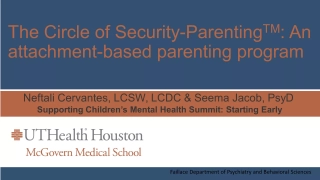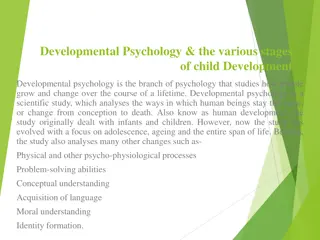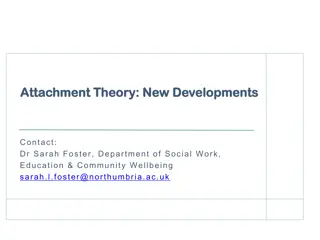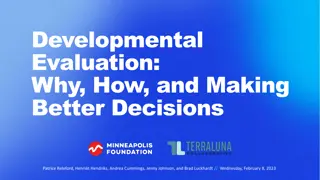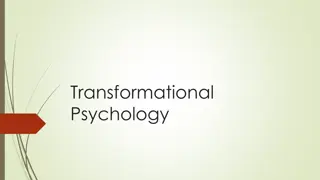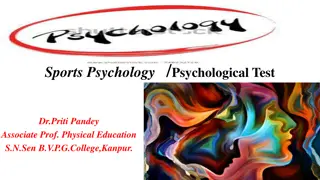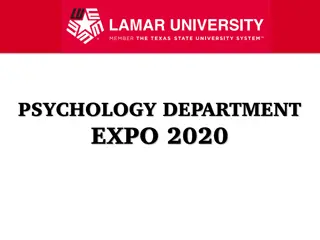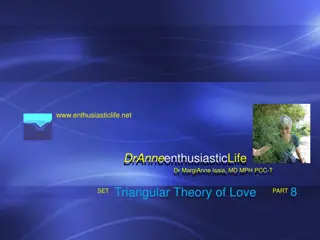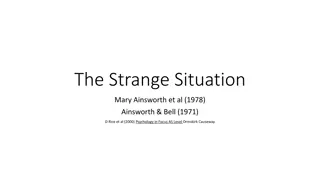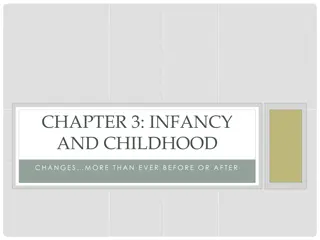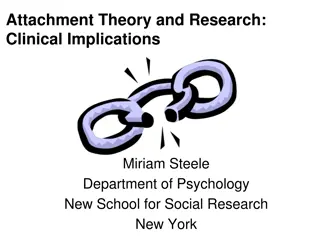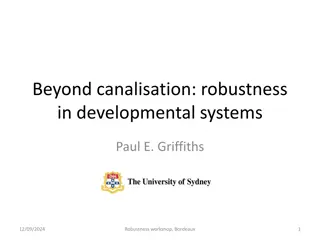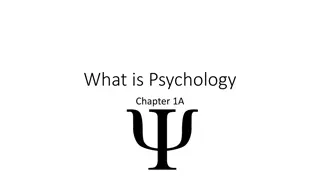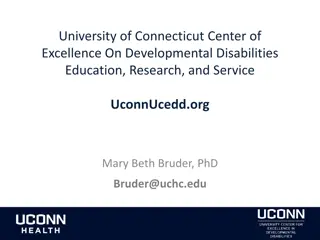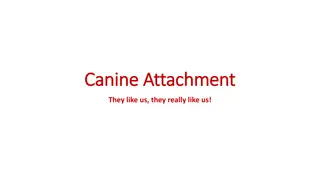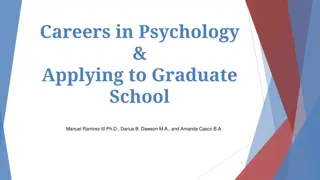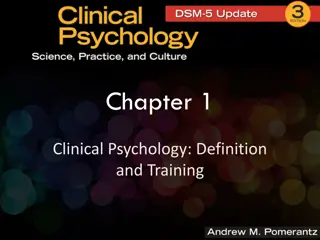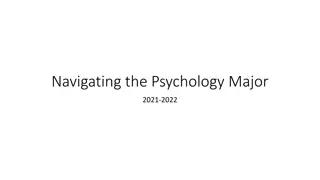Understanding Attachment Theory in Developmental Psychology
Attachment theory in developmental psychology, pioneered by Bowlby and Ainsworth, examines the emotional bonds between infants and caregivers. It delves into phases of attachment development, key components, and evaluation methods such as the Strange Situation Procedure. The theory emphasizes the significance of meeting a baby's needs and highlights the enduring emotional ties crucial for healthy social and emotional development.
Download Presentation

Please find below an Image/Link to download the presentation.
The content on the website is provided AS IS for your information and personal use only. It may not be sold, licensed, or shared on other websites without obtaining consent from the author. Download presentation by click this link. If you encounter any issues during the download, it is possible that the publisher has removed the file from their server.
E N D
Presentation Transcript
ATTACHMENT THEORY PSYCH 4040: Developmental Psychology Social and Emotional Development Nicole Lim
Your thoughts? What are some needs that are important to a baby? In a group, discuss & rank
Our Goals for Today Identify key stages and components of Bowlby s Attachment Theory Distinguish between the categories in Ainsworth s Attachment theory Characteristics Measurements Implications Ability to apply what we learn
Defining Attachment Enduring emotional bond that exists between a child and significant people in the child s life Lasting psychological connectedness between human beings - Bowlby Affectional tie that one person or animal forms between himself and another specific one a tie that binds them together in space and endures over time - Ainsworth
Bowlbys Four Phases of Attachment Preattachment phase (birth - 6 weeks) Do not discriminate amongst people around them 1. Attachment-in-the-making (6 weeks - 6-8 months) Infants prefer familiar people 2.
Bowlbys Four Phases of Attachment 3. Clear-cut attachment (6-8 months - 1 -2 years) Infants actively seek contact with familiar individuals Separation Anxiety 4. Reciprocal relationships (1 -2 years +) Working partnerships with caregivers
Bowlbys Four Key Components of Attachment Proximity Maintenance Safe Haven Secure Base Separation Distress
Video: Identify the Components! baby scared of vacuum https://www.youtube.com/watch?v=MWJzWl3k45E Proximity Maintenance Safe Haven Secure Base Separation Distress
Evaluating Attachment Ainsworth s Strange Situation Procedure Mom & child play Stranger enters 1st Separation Mom leaves 1st Reunion Mom returns 2nd Separation Mom leaves 2nd Reunion Mom returns 2nd Reunion Mom returns
Attachment Categories Secure (65%) Caregiver = secure base Seeks contact Comforted by mother Greets mother happily after separation Ambivalent/Resistant (15%) Extreme distress during separation Won t be comforted upon caregiver s return Expresses anger at caregiver
Attachment Categories Insecure/avoidant (20%) Little distress during separations Avoids contact with mother upon return Disorganized Attachment (<5%) Inconsistent behaviors Often appear dazed or disoriented
Video: Attachment Categories Secure, Insecure, Avoidant & Ambivalent Attachment in Mothers & Babies https://www.youtube.com/watch?v=DH1m_ZMO 7GU
Lets discuss In what ways can Attachment theory be applied to your interest/field? Review the list you created for what s important to babies , are there any changes to your rankings?


